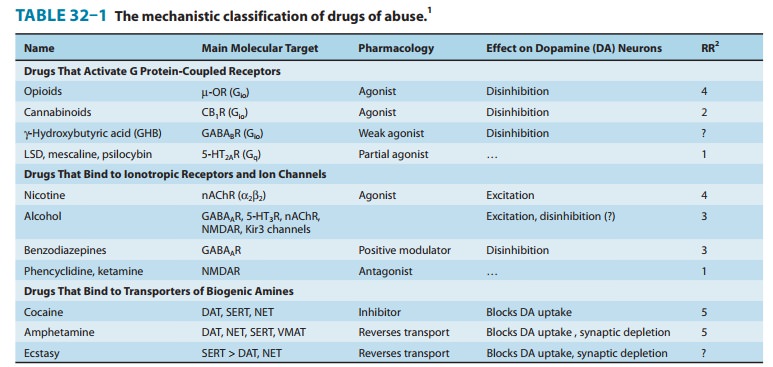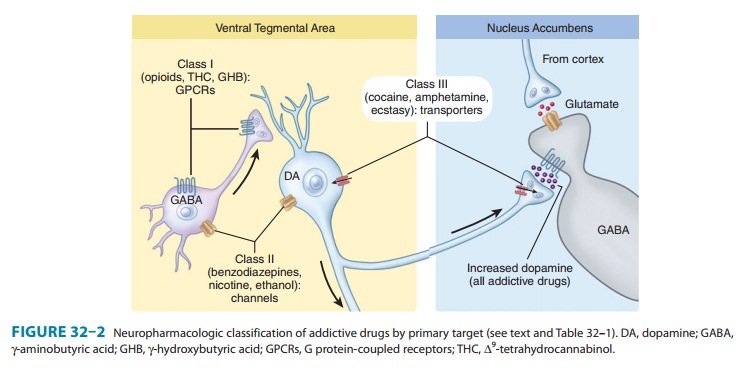Chapter: Basic & Clinical Pharmacology : Drugs of Abuse
Basic Pharmacology of Drugs of Abuse
BASIC PHARMACOLOGY OF DRUGS OF ABUSE
Since all addictive
drugs increase dopamine concentrations in target structures of the mesolimbic
projections, we classify them on the basis of their molecular targets and the
underlying mecha-nisms (Table 32–1 and Figure 32–2). The first group contains
the opioids, cannabinoids, γ-hydroxybutyric acid (GHB),
and
the hallucinogens, which all exert
their action through Gioprotein-coupled receptors. The second group includes nicotine, alcohol,the benzodiazepines,
dissociative anesthetics, and some
inhal-ants, which interact with ionotropic receptors or ion channels.The
last group comprises cocaine,
amphetamines, and ecstasy, which
all bind to monoamine transporters. The nonaddictive drugs are classified using
the same criteria.


Related Topics